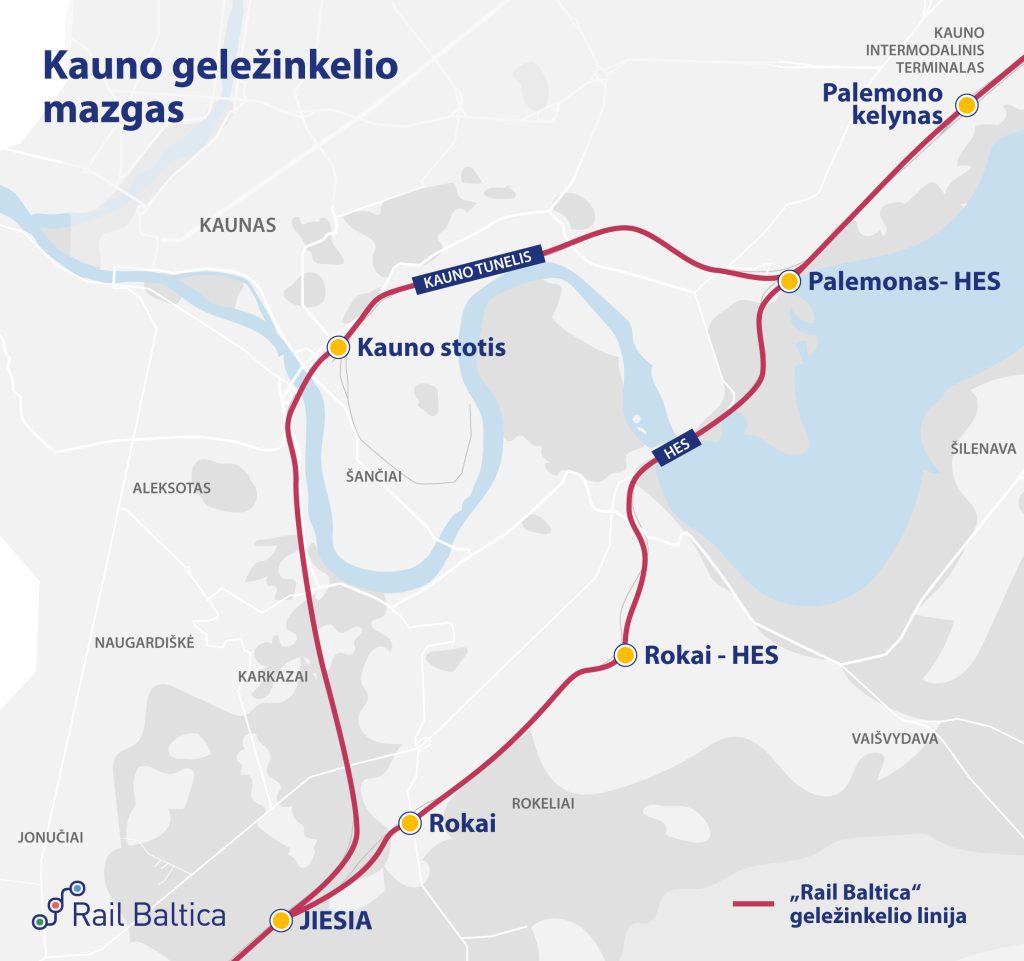Territorial planning procedures at the Kaunas railway hub are entering the next stage – coordination and approval. It is expected that the special plan of one of the most important infrastructural hubs required for the new international track will be approved by the Government in the third quarter of this year. Next on the agenda is the start of the land acquisition procedures.
“The Kaunas railway hub and its infrastructure are the epicentre of the Rail Baltica project – it will connect Western and Central Europe with Northern Europe and speed up the transportation of transit cargo to the Port of Klaipėda. The active participation of the public in territorial planning procedures is particularly welcome, because only mutual cooperation can ensure the most optimal solutions when planning the European gauge railway”, said Mindaugas Tarnauskas, Deputy Minister of Transport and Communications.
The concrete solutions of the special plan of the Kaunas node were presented to the public in March. For a period of two months before this, all interested parties had the opportunity to familiarise themselves with the engineering infrastructure provided for in the special territorial planning document.
“During the entire public hearing period, we received more than 80 offers. All of them were carefully evaluated and the arguments provided were taken into account. The following step is the coordination of the territorial planning document with the responsible institutions. We predict that it will take approximately four months”, said Dovydas Palaima, General Manager at LTG Infra Rail Baltica Management.
According to Mr Palaima, the development of the Kaunas railway hub will become an impetus for the social and economic growth of the entire region – both by creating new transport connections and by contributing to economic growth and job creation.

The project also focuses on addressing environmental protection, since the land plot planned for the new European track gauge includes the territory of Natura 2000 – about 2.6 ha of protected territories. Taking into account the scope of the impact and its significance, the impact-reducing and compensatory measures are being analysed. This matter will be handled through intensive cooperation with the European Commission.
After the Government approves the plan, the land acquisition procedures will begin. In total, 43.3 hectares of public and private land plots and 325 structures, of which 25 are residential buildings, are to be acquired for the needs of the state. The land will be acquired by fairly compensating the owners or other users as provided for by the law for the implementation of projects of special national importance. All procedures are planned to be completed in about 3 years.
Performance of the works on the Kaunas railway hub envisages the construction of 1,435 mm gauge main tracks, as well as arrival and departure tracks next to the existing Kaunas station building, and the relocation of 1,520 mm gauge tracks to the southern side of the station. In addition, a railway track is to be built on the sections Palemonas–Kaunas–Jiesia and Palemonas–Kaunas Hydroelectric Power Plant–Rokai–Jiesia. A total of 120.8 km of railway tracks will be installed or reconstructed. The entire planned railway section will be electrified.
The construction of the Kaunas railway node will include 5 new railway viaducts and 2 new bridges over the Jiesia River, as well as the reconstruction or widening of 5 existing bridges. Furthermore, there are plans to build a railway tunnel for the planned double-track railway in the vicinity of the Palemonas station, to install 7 vehicle tunnels, reconstruct vehicle viaducts and install pedestrian crossings.
